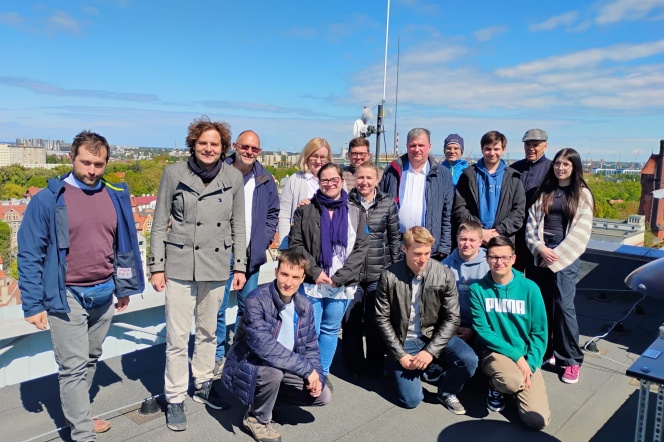Date added: 2025-05-13
AIS Antenna on the Roof of the Institute of Naval Architecture – A Student Project in the Gulf of Gdańsk

"The AIS (Automatic Identification System) is used for the automatic identification of vessels and is mandatory on all ships that transmit signals via short-range (VHF) radio waves," emphasised Mateusz Gutkowski, President of the WiR student club.
The AIS receiver provides key data, including:
-
MMSI number (a unique vessel identifier),
-
vessel name,
-
position (latitude and longitude),
-
course over ground (COG),
-
speed over ground (SOG),
-
navigational status (e.g. “under way”, “at anchor”),
-
estimated time of arrival (ETA).
"Thanks to our own receiver, we will be able to use the data collected by the antenna for both scientific and educational purposes. The AIS system will enable us to create visualisations and conduct advanced statistical analyses using machine learning methods and Bayesian networks," added Dr Eng. Marcin Życzkowski, supervisor of the club.
The AIS antenna was financed through funding awarded under the 2025 Student Project Programme of the Faculty of Mechanical Engineering and Ship Technology, supported by Dean Professor Mariusz Deja.
WiR (Wytrzymałość i Ryzyko – Strength and Risk) is a student club that was established at the Gdańsk University of Technology in 2022. Its mission is to spark student interest in structural mechanics and to prove that engineering doesn't have to be dull. The club’s goals include introducing students to spatial data analysis, big data analytics, mathematical modelling, data-driven knowledge discovery, ship modelling, static analysis of ships, interpretation of shipbuilding drawings, and proficiency in CAD software.
-
2025-10-22
Life in Gdansk – History, Tips, and Fun



